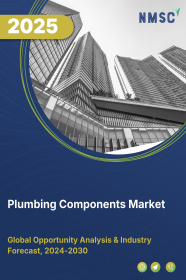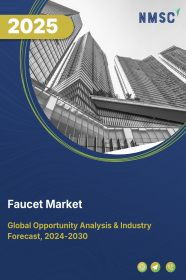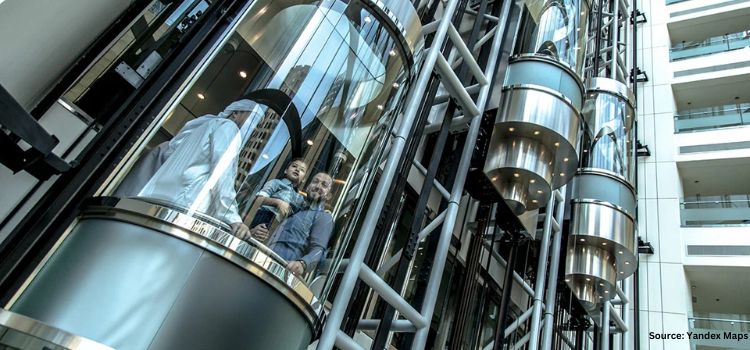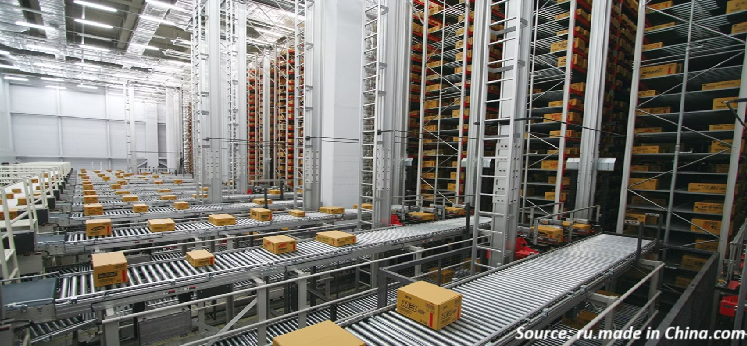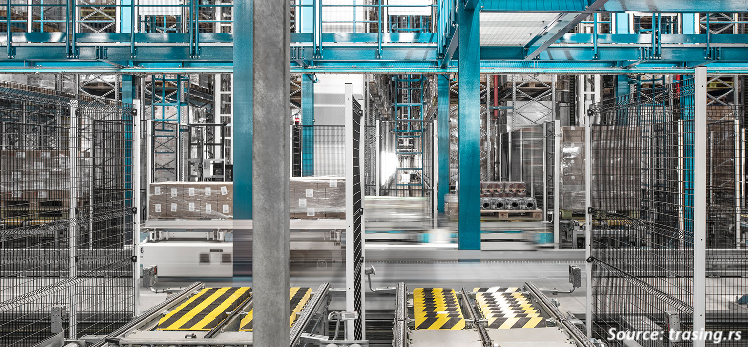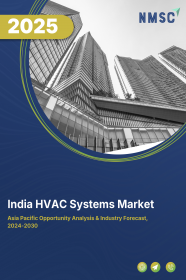
India HVAC Systems Market by Equipment (Cooling Equipment, Heating Equipment, and Ventilation), by Implementation Type (New Construction and Retrofit), by Technology (Traditional HVAC Systems, Smart HVAC Systems), and by End User (Residential, Commercial, and Industrial) - Opportunity Analysis and Industry Forecast, 2024– 2030
Industry: Construction & Manufacturing | Publish Date: 07-Jan-2025 | No of Pages: 164 | No. of Tables: 126 | No. of Figures: 71 | Format: PDF | Report Code : CM1944
US Tariff Impact on India HVAC Systems Market
Trump Tariffs Are Reshaping Global Business
Market Definition
The India HVAC System Market size was valued at USD 15.69 billion in 2023, and is predicted to reach USD 33.50 billion by 2030, at a CAGR of 10.8% from 2024 to 2030.
HVAC (Heating, Ventilation, and Air Conditioning) refers to the technology and systems used in buildings to regulate indoor environmental conditions such as temperature, humidity, and air quality to ensure comfort and safety for occupants. Heating systems provide warmth during colder months, ventilation systems circulate and replenish indoor air, and air conditioning systems cool and dehumidify indoor air during warmer months.
HVAC systems offer several advantages, including improved occupant comfort and health, increased energy efficiency leading to cost savings, better indoor air quality through filtration and ventilation, precise temperature control for enhanced productivity in commercial settings, and protection of building infrastructure from extreme weather conditions. Additionally, these systems can be designed to meet specific requirements, contributing to sustainability goals by reducing carbon emissions and promoting eco-friendly practices in building operations.
Increasing Energy-Saving Regulations Drives the HVAC System Market
The enforcement of residential energy-saving regulations significantly influences the HVAC system market. These regulations stimulate market growth by mandating the use of more energy-efficient systems, prompting manufacturers to develop compliant HVAC units. Consequently, consumers are motivated to invest in energy-saving HVAC systems to comply with regulations and minimize energy costs.
Furthermore, these regulations enhance homeowner’s awareness of the advantages of energy-efficient HVAC systems, resulting in heightened demand for such products. This heightened awareness spurs manufacturers to innovate and expand their offerings to cater to the burgeoning market demands, thereby amplifying the demand for energy-efficient HVAC systems.
Rising Urbanization and Construction Trends Propels the Market Expansion
Urbanization and construction trends serve as significant catalysts for expansion within the HVAC sector. As urban populations burgeon, there arises an increased demand for HVAC installations across various structures including residential, commercial, and industrial facilities such as apartments, office complexes, shopping centers, and factories.
Simultaneously, there is a noticeable shift in construction methodologies towards sustainability and energy efficiency, spurred by green building initiatives mandated by governments and driven by environmental concerns. These initiatives necessitate stringent HVAC standards in new constructions, thereby fostering a market for environmentally-friendly solutions.
Additionally, the inclination towards renovating and retrofitting existing buildings further accentuates the necessity for HVAC upgrades, aligning with contemporary energy-saving technologies. The integration of HVAC systems with building automation and smart technology further enhances building performance and energy efficiency, highlighting the intertwined influence of urbanization, sustainable construction, and technological innovation in driving the growth trajectory of the HVAC industry.
Price Volatility of Raw Materials Restrains the Growth of the HVAC system Market
The augmentation of raw material costs, spurred by inflation and supply chain disruptions, detrimentally affects the manufacturing expenses associated with HVAC systems. The upsurge in expenditures for pivotal raw materials such as steel, copper, and aluminum significantly amplifies production costs for HVAC manufacturers.
Consequently, smaller and mid-sized HVAC entities experience margin pressures, adversely impacting their profitability and hindering investments in research and development endeavors. This acts as a barrier to the market's growth trajectory.
IoT Integration Creates Ample Opportunities for the HVAC System Market
The amalgamation of Internet of Things (IoT) technology presents a significant market prospect for the HVAC industry. The integration of IoT facilitates remote control functionalities, heightened energy efficiency, and predictive maintenance solutions. By integrating IoT devices and sensors into HVAC systems, users gain the capability to remotely monitor and adjust settings, optimize energy utilization, and preemptively address maintenance concerns before they escalate.
This enhances user experience and comfort, diminishes energy expenditures, and prolongs the operational lifespan of HVAC equipment. With increasing demand for smarter and more efficient buildings surpassing existing infrastructure capabilities, the adoption of IoT integration is poised to generate abundant opportunities within the HVAC system market.
Competitive Landscape
The market players operating in the India HVAC System market include Voltas Ltd., LG Corporation, Samsung Electronics Co., Ltd., Daikin Airconditioning India Private Limited, Carrier Airconditioning & Refrigeration Limited, Panasonic Life Solutions India Pvt. Ltd., Blue Star Ltd., Mitsubishi Electric India Pvt. Ltd., Siroco HVAC India Pvt. Ltd., MG Cooling Solutions, SMC Corporation (India) Pvt. Ltd., Reynold India Private Ltd., Suntec Energy Systems, Thermax Limited., Evapoler Eco Cooling Solutions., and others.
India HVAC System Market Key Segments
By Equipment
-
Cooling Equipment
-
Unitary Air Conditioners
-
Variable Refrigerant Flow Systems (VRF)
-
Chillers
-
Room Air Conditioners
-
Coolers
-
Cooling Towers
-
-
Heating Equipment
-
Heat Pumps
-
Furnaces
-
Unitary Heaters
-
Boilers
-
-
Ventilation
-
Air-handling Units (AHUs)
-
Air Filtration Systems
-
Ventilation Fans
-
HRVs & ERVs
-
Air Purification Systems
-
Others
-
By Implementation Type
-
New Construction
-
Retrofit
By Technology
-
Traditional HVAC Systems
-
Smart HVAC Systems
By End User
-
Residential
-
Commercial
-
Industrial
REPORT SCOPE AND SEGMENTATION:
|
Parameters |
Details |
|
Market Size in 2023 |
USD 15.69 Billion |
|
Revenue Forecast in 2030 |
USD 33.50 Billion |
|
Growth Rate |
CAGR of 10.8% from 2024 to 2030 |
|
Analysis Period |
2023–2030 |
|
Base Year Considered |
2023 |
|
Forecast Period |
2024–2030 |
|
Market Size Estimation |
Billion (USD) |
|
Growth Factors |
|
|
Companies Profiled |
10 |
|
Market Share |
Available for 10 companies |
|
Customization Scope |
Free customization (equivalent up to 80 working hours of analysts) after purchase. Addition or alteration to country, regional, and segment scope. |
|
Pricing and Purchase Options |
Avail customized purchase options to meet your exact research needs. |
KEY PLAYERS
-
Voltas Ltd.
-
LG Corporation
-
Samsung Electronics Co., Ltd.
-
Daikin Airconditioning India Private Limited
-
Carrier Airconditioning & Refrigeration Limited
-
Panasonic Life Solutions India Pvt. Ltd.
-
Blue Star Ltd.
-
Mitsubishi Electric India Pvt. Ltd.
-
Siroco HVAC India Pvt. Ltd.
-
MG Cooling Solutions
-
SMC Corporation (India) Pvt. Ltd.
-
Reynold India Private Ltd.
-
Suntec Energy Systems
-
Thermax Limited.
-
Evapoler Eco Cooling Solutions.

















 Speak to Our Analyst
Speak to Our Analyst




